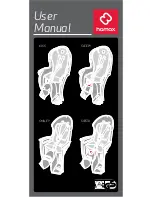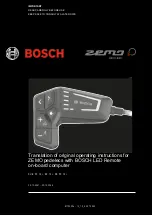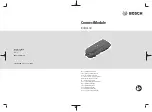
12
d.
Your local electric bicycle and bicycle laws
Your new G Plus Mariner 7 was designed to follow the federal guidelines to establish the G Plus Mariner 7 as a
traditional pedal power bicycle within most USA states and to be allowed to ride in bicycle pathways. Electric
bicycle laws however change often and you are responsible to confirm legal status of the riding of your electric
bicycle in bicycle pathways. Below is a reference section on the USA electric bicycle federal guidelines:
Electric Bicycle Laws (please contact your local transportation department for the specific laws in your state and
city regarding riding electric bicycles on bike pathways)
Prodeco Technologies offers the information below as guidance and does not guarantee or assure riders
they are following the rules and regulations of their state.
Electric bicycle laws may vary by state to state with most states following the classification of that by the CPSC
(Consumer Product Safety Commission), DOT & NHSTA. Further, the US NHSTA (National Highway Traffic Safety
Administration) defines low-speed electric bicycles (under 20mph) also as consumer products and not Motor
Vehicles for safety standards. The NHSTA adheres for the most part to the CPSC guidelines. We included
reference below on how electric bicycles are perceived by the Federal Government’s most important agencies. We
do believe new regulation and rules will apply in the future upon the electric bicycle becoming one of the standard
forms of transportation for the masses. Prodeco Technologies will continue to follow new rules and guidance set
forth by these agencies, always welcoming and adhering to the guidelines they feel are required to assure safety
for the electric bicycle rider.
On October 22, 2008, the Federal Highway Administration (FHWA) updated the Bicycle and Pedestrian
Provisions of Federal Transportation Legislation to make technical corrections and clarifications.
Below are the important updates reflecting electric bicycles:
Motorized Vehicle Use: In general, motorized vehicles are not permitted on non-motorized trails and pedestrian
walkways funded under Title 23. Exceptions to this general rule exist for maintenance vehicles; motorized
wheelchairs; when State or local regulations permit, snowmobiles; and electric bicycles (weighing under 100
pounds and a top speed of less than 20 miles per hour); "and such other circumstances as the Secretary deems
appropriate" (except the Recreational Trails Program which specifically provides funds for motorized trails). In 2008,
FHWA developed a Framework for Considering Motorized Use on Non-motorized Trails and Pedestrian Walkways
to implement the "other circumstances" provision.
Prodeco Technologies only offers electric bicycles that fall under the category of “weighing under 100 pounds and a
top speed of less than 20 miles per hour”. According to the DOT and NHSTA, Prodeco electric bicycles meet the
exception of Motorized Vehicles and therefore can be ridden on non-motorized trails and bike paths permitting state
and local laws.
Framework for Considering Motorized Use on Non-motorized Trails and Pedestrian Walkways under 23
U.S.C. § 217
The purpose of this document is to provide guidance to Federal Highway Administration (FHWA) division offices
and a consistent framework for determining when to permit an exception for motorized use on non-motorized trails
and pedestrian walkways under 23 U.S.C. § 217(h)(5). The relevant legislation reads as follows:
23 U.S.C. § 217. Bicycle Transportation and Pedestrian Walkways
(h) Use of Motorized Vehicles.--Motorized
vehicles may not be permitted on trails and pedestrian walkways under this section, except for-- (1) maintenance
purposes; (2) when snow conditions and State or local regulations permit, snowmobiles; (3) motorized wheelchairs;
(4) when State or local regulations permit, electric bicycles; and (5) such other circumstances as the Secretary
deems appropriate.
(j) Definitions.--In this section, the following definitions apply:
(2)
Electric bicycle.--The term "electric bicycle" means any bicycle or tricycle with a low-powered electric
motor weighing under 100 pounds, with a top motor-powered speed not in excess of 20 miles per hour.
(4) Wheelchair.--The term "wheelchair" means a mobility aid, usable indoors, and designed for and used by
individuals with mobility impairments, whether operated manually or motorized.
The above
23 U.S.C. § 217
offers direction that the Prodeco Electric Bicycles are allowed on bike-paths (non-
motorized trails) due to Prodeco electric bicycles falling under the classification of less than 100 pounds and under
20 mph.
HR 727
SECTION 1, CONSUMER PRODUCT SAFETY ACT
The Consumer Product Safety Act (15 U.S.C. 2051 et seq) is amended by added at the end of the following:
LOW-SPEED ELECTRIC BICYCLES
SEC. 38.(a) Notwithstanding any other provision of law, low-speed electric bicycles are consumer products within
the meaning of section 3(a)(1) and shall be subject to the Commission regulations published at section
1500.18(a)(12) and part 1512 of title 16, Code of Federal Regulations.
(b) For the purpose of this section, the term `low-speed electric bicycle' means a two or three-wheeled vehicle with
fully operable pedals and an electric motor of less than 750 watts (1 h.p.), whose maximum speed on a paved level
surface, when powered solely by such a motor while ridden by an operator who weighs 170 pounds, is less than 20
mph.
Содержание G Plus Mariner 7
Страница 7: ...7...













































